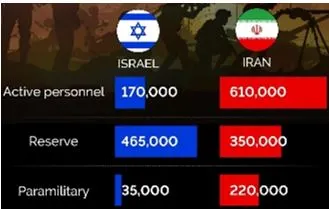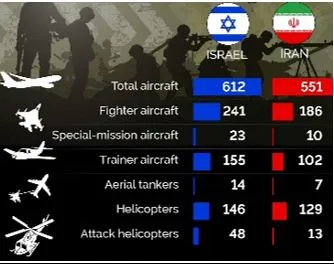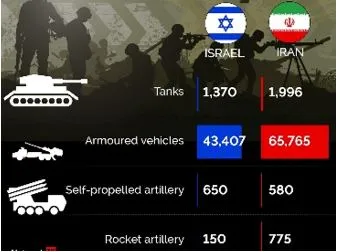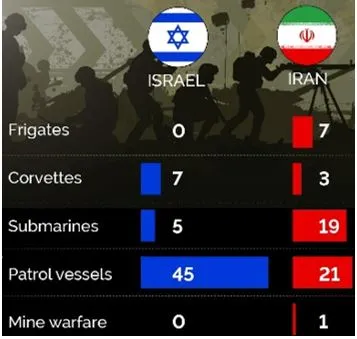

3rd October 2024 (9 Topics)
Context
Iran’s missile attack on Israel has stoked fears of a wider conflict in West Asia.
Why are Israel and Iran enemies?
- Israel and Iran were allies until the 1979 Islamic revolution in Iran,
- They became enemies primarily due to the ideological shift following the 1979 Islamic Revolution in Iran, which transformed the country into a regime that opposes Israel’s existence.
- Iran openly denies Israel's right to exist, referring to it as a "cancerous tumor" that must be destroyed.
- Israel perceives Iran as an existential threat due to its support for militant groups like Hezbollah and Hamas, which aim to undermine Israeli security.
- Additionally, concerns over Iran's nuclear program, which Israel fears could lead to the development of nuclear weapons, further exacerbate tensions between the two nations.
What happened?
- Tehran fired roughly 200 ballistic missiles in an unprecedented assault on Israel, taking the region closer to a full-scale war.
- Israel, which largely intercepted the missiles with the help of its allies, has vowed retaliation against Iran. Tehran has also promised to strike back if Israel attacks.
- Iran’s Reasons:
- Iransaid it launched a barrage of missiles against Israel in response to the assassination of the Lebanese group Hezbollah leader Hassan Nasrallah and Islamic Revolutionary Guard Corps (IRGC) commander Abbas Nilforoushan, and the killing of Hamas leader Ismail Haniyeh in Tehran in July.
- It also said the attack was a response to Israel’s deadly strikes in Gaza and Lebanon.
India's Concerns
As the conflict in the Middle East escalates, particularly with Israel's offensive in Gaza and its implications for regional stability, India finds itself navigating a complex landscape of diplomatic, economic, and security concerns. While India has called for restraint and the protection of civilians, several broader issues warrant attention.
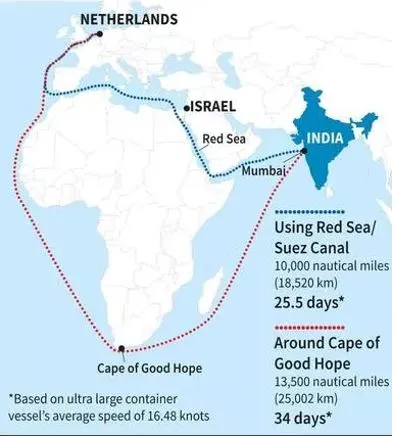
- Trade Troubles: The potential for an Israel-Iran conflict poses significant risks for global trade, particularly in the Red Sea region, a vital shipping route for oil and goods. The Yemen-based Houthis have already escalated attacks on vessels in this area, threatening maritime security.
- A full-blown war would mean diverting the shipments through Cape of Good Hope to avoid attacks. Moreover, the blocking of the Strait of Hormuz through which India gets its LNG from Qatar and oil from Iraq and Saudi Arabia could be another challenge.
- Hormuz, located between Oman and Iran, connects the Persian Gulf with the Gulf of Oman and the Arabian Sea. Hormuz is the world’s most important oil chokepoint because large volumes of oil flow through the Strait.
- Expensive oil: Iran is a powerhouse in the global oil market as a key member of OPEC, and the recent missile strikes have spooked oil markets. Despite rising oil imports from Russia, India also depends on Middle East for oil and gas imports. The share of Middle Eastern oil in India’s August crude imports rose to 44.6% from 40.3% in July.
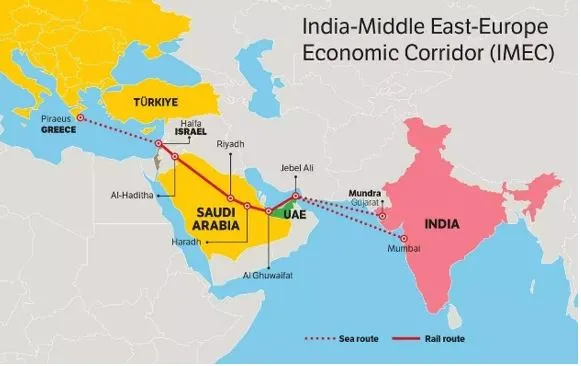
-
- Iraq, Saudi Arabia, the UAE and Kuwait are main Middle Eastern suppliers of oil to India.
- Threatened IMEC Plan: The Iran-Israel war could impede the progress of the India-Middle East-Europe Corridor (IMEC), which was announced last year during the G20 meeting in New Delhi.
- The IMEC plan comprises an Eastern Corridor connecting India to the Gulf region and a Northern Corridor connecting the Gulf region to Europe. It will include a railway and ship-rail transit network, as well as road transport routes.
Comparative analysis of the military capabilities of Israel and Iran
|
|
Iran's Missiles |
Israel's Missile Defense Systems |
|
|
Military Strength
|
Iran boasts a larger military force, comprising 610,000 active personnel, 350,000 reservists, and 220,000 paramilitary forces. |
Israel has 170,000 active military personnel, along with 465,000 reserves and 35,000 paramilitary forces. |
|
|
Air power
|
Iran has a total of 551 aircraft, comprising 186 fighter jets and 129 helicopters, of which 13 are designated as attack helicopters |
Israel operates 612 aircraft, including 241 fighter jets and 146 helicopters, with 48 classified as attack helicopters. Notably, Israel's air power includes 23 special-mission aircraft, enhancing its operational flexibility. |
|
|
Land forces
|
Iran operates 1,996 tanks and a larger fleet of 65,765 armored vehicles. |
Israel maintains 1,370 tanks and 43,407 armored vehicles, in addition to 650 self-propelled artillery units and 150 rocket artillery systems. |
|
|
Naval capabilities
|
Iran has seven frigates and three submarines, along with 19 patrol vessels and one mine warfare vessel, showcasing a stronger naval presence in the region. |
Israel's naval capabilities are relatively limited, with no frigates and five submarines, along with seven corvettes and 45 patrol vessels. |
|
|
Important Missiles |
|
|
|
More Articles
